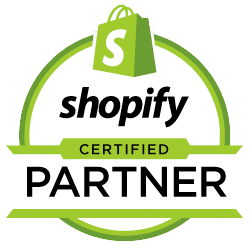When it comes to increasing revenue and improving customer experience, one of the most effective yet underutilized opportunities is at checkout. By implementing smart cross-selling and upselling strategies, e-commerce businesses can significantly boost their average order value (AOV) while offering more value to their customers.
But how do you execute these strategies without overwhelming or frustrating your customers? This blog will walk you through proven approaches to transform your checkout into a powerful sales driver.
What Are Cross-Selling and Upselling?
Before we jump into strategies, let’s quickly clarify what these terms mean:
- Cross-selling involves suggesting complementary products. For example, when a customer adds a smartphone to their cart, recommending a phone case or headphones is a cross-sell.
- Upselling encourages the purchase of a higher-value item. For instance, if a customer chooses an entry-level laptop, you might suggest an upgraded version with better features.
Both techniques are about helping customers discover relevant products that enhance their experience, while also increasing your revenue. It’s a win-win!
Why Focus on Checkout for Cross-Selling and Upselling?
The checkout stage is a high-intent moment. Your customers have already shown a willingness to purchase, making it the perfect opportunity to present additional items or upgrades. With the right strategies, you can capitalize on this moment of engagement and increase your sales without being pushy.
5 Key Strategies for Effective Cross-Selling and Upselling
1. Personalization Is Key
Customers are much more likely to respond to recommendations tailored to their preferences and purchase history. Personalized upselling and cross-selling not only drive sales but also create a more positive shopping experience.
Example in Action
Best Buy leverages customers’ browsing and purchase history to provide personalized product suggestions. This strategy helped them achieve higher upsell and cross-sell rates while ensuring relevance for the customer.
How to Implement
- Use AI-powered recommendation engines to analyze customer behavior.
- Suggest items based on browsing history or previous purchases. For example, if a customer recently bought running shoes, recommend accessories like socks or a water bottle.
2. Strategic Timing and Placement
The timing and location of your upsell or cross-sell offer can make or break its success. Placing offers strategically within the checkout process ensures better visibility and a higher likelihood of conversion.
Example in Action
A Shopify store found success by implementing timed, contextual upsell offers during checkout. For instance, when a customer added a skincare product to their cart, they were offered a complementary cleanser for a discounted price. This simple tweak led to a noticeable increase in AOV.
How to Implement
- Add cross-sell recommendations on the cart page or early in the checkout process.
- Showcase upsell offers during payment or order confirmation stages.
3. Bundle Complementary Products
Bundling is a tried-and-true method to increase perceived value for customers while driving additional sales. Offering bundles of products that naturally go together provides a compelling reason for customers to spend more.
Example in Action
Amazon’s “Frequently Bought Together” feature is a masterclass in bundling. By displaying related products that previous customers often purchased as a group, Amazon increased revenue by 35%.
How to Implement
- Create bundles of complementary items that offer savings compared to purchasing each product individually.
- Clearly highlight the benefits of the bundle, such as cost savings or enhanced functionality.
4. Highlight Savings and Value
Customers love a good deal. Highlighting the monetary or convenience-related savings they stand to gain can make upsell and cross-sell offers irresistible.
Example in Action
A small e-commerce business that sold home gym equipment saw a 20% increase in sales after emphasizing the cost savings of purchasing bundled gear. By showing customers the financial benefit, they successfully converted more buyers.
How to Implement
- Use clear language like “Buy Together and Save 20%!” or “Upgrade Now for Just $10 More.”
- Show the price breakdown to demonstrate the value customers are getting.
5. Continuously A/B Test and Optimize
What works for one business might not work for another. Regular A/B testing helps you identify the strategies that resonate most with your audience, ensuring you’re making data-driven decisions.
Example in Action
A fashion retailer conducted A/B testing on its upselling tactics. By experimenting with the placement of offers—checkout page vs. thank-you page—they found that showing upsell offers on the thank-you page generated 15% higher conversions.
How to Implement
- Test different placements, wording, and visuals for your recommendations.
- Measure metrics like AOV, conversion rates, and customer feedback to see what performs best.
Case Study Round-Up
To inspire your strategy further, here’s a quick summary of effective cross-selling and upselling in action:
- Amazon increased revenue by 35% with their “Frequently Bought Together” bundling feature.
- Best Buy used personalized recommendations to engage users and boost sales.
- A Shopify Store improved AOV with contextual and timed upsell offers.
- A Home Gym Seller earned 20% greater revenue by emphasizing savings in bundled offers.
- A Fashion Retailer optimized their upselling with A/B testing, increasing conversions by 15%.
Final Thoughts
Cross-selling and upselling, when done thoughtfully, can elevate both your customer experience and your bottom line. By personalizing recommendations, strategically placing offers, bundling products, and highlighting value, you can transform your checkout process into a growth engine for your business.
Remember, these strategies thrive on optimization. Regularly test different approaches to pinpoint what truly works for your audience.
We Want To Talk To You About Your Marketing Goals.
Let’s Supercharge Your Online Growth!












